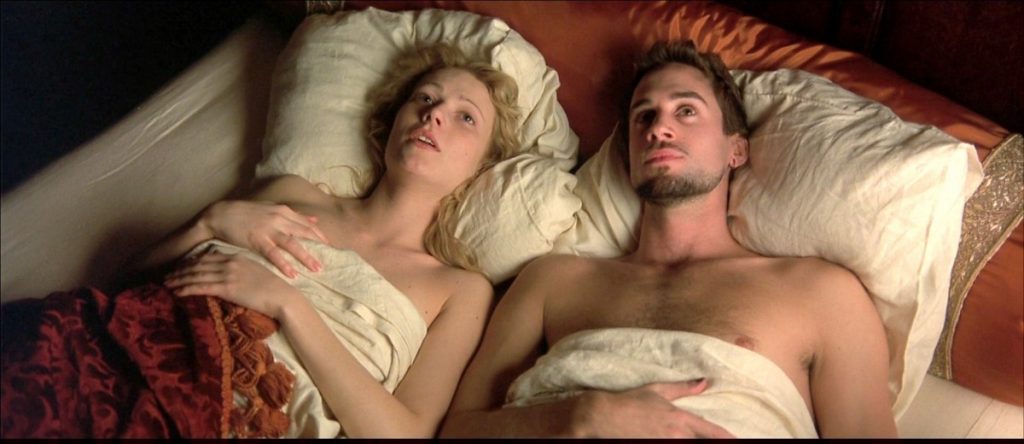This entry includes content that some may find uncomfortable and may have possible triggers for some.
In my last post, I started to introduce one of the main issues that the otaku, and even general anime and manga enthusiasts face: stigma.
Since there are many sides to this particular subject that I could easily write another few thousand words on alone with the issues behind the American rating systems, video games, the specific anime genres such as “harem” and “ecchi”, my focus for this post is the American double standards and the main root of the stigma behind otaku culture.
Given how well accepted Studio Ghibili’s works, game based anime such as “Kingdom of Hearts” and even the Hasbro toys turned animation “Transformers”, stigma should seem like less of an issue. Except one thing I noticed, and keep noticing, is that most of the anime, manga and games that are not associated with the stigma are geared toward kids. Or are “family friendly”, even if they deal with more mature themes, such as Studio Ghibili films.
In contrast, much of the anime and manga that otaku watch are not what would be considered in Western culture a “cartoon”, and can be very graphic, dark and/or deal with “R” rated themes.
In this context normally R rated movies in America, given out by the Movie Picture Association of America, are rated almost universally on whether or not there is any sexual content, no matter how mundane or brief, and generally excludes violence, gore or other questionable content, as can be seen with the R rating of the film “Shakespeare in Love” vs. the PG-13 ratings of “The Dark Knight”, “Taken” and even PG for “Jaws” – though that was prior to the introduction of the PG-13 rating.

Part of the scene that earned “Shakespeare in Love” an R rating from the MPAA.

The MPAA PG-13 rated “The Dark Knight” scene where the Joker blows up a hospital.
But what I’ve noticed that is interesting is that while in movies such as “The Dark Knight” and its level of violence and graphic themes (such as the Joker blowing up a hospital) are largely overlooked in American society and entertainment, if it exists in an anime, a “cartoon”, it becomes heavily criticized and stigmatized. And this isn’t even covering fan service.
Personally, I do not like fan service in anime and am uncomfortable with the topic in general, but it does play a key role in the misconception and stigma in American of anime being, perverted.
First there is a largely ignored double standard in what is “perverted” to Americans, given that the “Austin Powers” films somehow made away with only a PG-13 rating and in a study – I shall look up and link specifically – that Americans find it is more acceptable to talk about their sex life at work than their salary.
It also seems to have little to do with whether it is animated or not more and more recently, examining the popularity of American cartoons such as “Family Guy”, “American Dad”, and “South Park” and the levels of violence and sexual themes in them as well, though it should also be noted as television programs they are rated under a different system. But this shift may also indicate that whether it is animated or not, is not a deciding factor.

The “Family Guy” American cartoon recreation of the hospital scene from “The Dark Knight”.
So, once again, I’m not a fan of fan service, as are other anime fans as it is also seen as something that is over saturating and ruining the quality of the anime created by the industry, such as in the case of “Sword Art Online,” where it is blatantly awkward and critically panned. In fact, most fans want less or no fan service in anime, as it mainly only caters to the middle to high school male demographic in Japan, America and abroad, and not the much larger and diverse anime, manga and otaku community.
It is also hard to see how the larger part of American society is actually qualified to judge whether sexual content in anime is perverse. Notably you can turn on the television, open a magazine and see an ad online on any day and come across more than one example of everyday items, such as food, cars, electronics etc. being sexualized by nearly naked women and topless men.
The lack of advertisements for medications such as Viagra and other “enhancement” and “performance” products outside of America should be a strong indicator that the odd one out is America and it should be the last one to judge, let alone stigmatize, whether or not something is too sexual given American culture in and of itself is saturated.
This is also beside the double standard for violence as well and its issues in how it is gauged and evaluated in American culture.
But what I pointed out in another post as the main instigator of the perverted, reclusive and obsessive stigma was western media’s misinterpretation of the word otaku in regards to the high profile serial killer Tsutomu Miyazaki.
WARNING: Tsutomu Miyazaki’s crimes are TRIGGERS.
I will address them, but in the briefest of terms, for myself as well.
No images or in-depth descriptions. If this subject is too much, DON’T read the following text.
This part explains how anime culture and the word “otaku” became severely misaligned due to one man’s insanity, the media’s misuse of the word and possible political motives at the time given there was more than enough evidence to convict him.
But to do that I have to address Miyazaki’s crimes, history and facts surrounding the case as it is a crucial factor in the heavy stigma surrounding otaku culture.
The text on this part to skip begins and ends with the image below (I will also go into the webcomic this image is from later).

Warning logo from the webcomic “Fish Eye Placebo” by Yumei
Tsutomu Miyazaki, also known as “The Little Girl Murderer”, “Dracula” and “The Otaku Murder”, was arrested in June 1989 and executed in 2008 for the murder for four girls, ages 4-7, in the Saitama and Tokyo Prefectures of Japan.
The murders included vampirism, cannibalism and necrophilia. He had long history of trauma and illness that was never treated or evaluated prior to his crimes, which took place right after the death of his grandfather, May 1988. His grandfather was only person Miyazaki claimed was supportive of him. His behavior took an extreme change as well, becoming reclusive and obsessed with the pornographic photographs and videos he shot and put together. He attacked both his mother and his sister when they confronted him.
His classmates described him as having an inferiority complex. He was born premature and with deformed hands. His parentage was of his father and one of his father’s sisters. He was also ostracized at his elementary school due to his hands.
The word “otaku” and the panic the media created over anime was due to the presence of some anime among 5,763 videotapes found at his home. The tapes also included horror and slasher films. While Miyazaki had said that the films influenced him, five specific ones in particular, it should be noted that he also claimed “Rat Man”, a fictitious alter ego that he said took over him and he had no control over, was for responsible his actions.

Warning logo from the webcomic “Fish Eye Placebo” by Yumei
It is disputed whether or not the collection of films was tampered with, with extra material added to help propagate fear toward otaku culture.
The crime journalist Fumiya Ichihashi also suspected, in defense of otaku culture and not Miyazaki, that in the Miyazaki case that the information released by the police was to play into the public’s stereotypes and fears on otaku to help cement a conviction.
It should also be noted that police corruption in Japan in regards to murder cases is an open secret in the police force.
The documentary film “Freakonomics,” based on the book by Steven D. Levitt and Stephan J. Dubners, goes into this corruption in regards to sumo and how the corruption effects Japanese society at large.
Former Tokyo Police Investigator and vocal critic Hiromasa Saikawa states that the arrest rate for murders in Japan, often exceeding 96%, does not reflect reality, the honne, “real truth” and is tatemae, “the facade”. Instead this abnormally high rate of arrests is artificially maintained. Often if they have an extremely high chance of finding the perpetrator of the murder, it is treated as a murder case, building on the tatemae. But if they cannot, it is treated as an abandoned body case and closed, which does not effect the tatemae, the facade that the police are completing their role and duty in society.
In addition, police are only recognized my the number of arrests they make and a blind eye is turned if the numbers remain high. So it is common for the police to employ various schemes to raise these numbers and keep up the facade that they are doing well.
This I suspect may have been what contributed to otaku culture being brought into the public’s eye with Miyazaki’s high profile case. As the case did not need bolstering to make an arrest or conviction, I believe it had to do with a larger issue at the time, which as far as I can find may have been politically motivated.